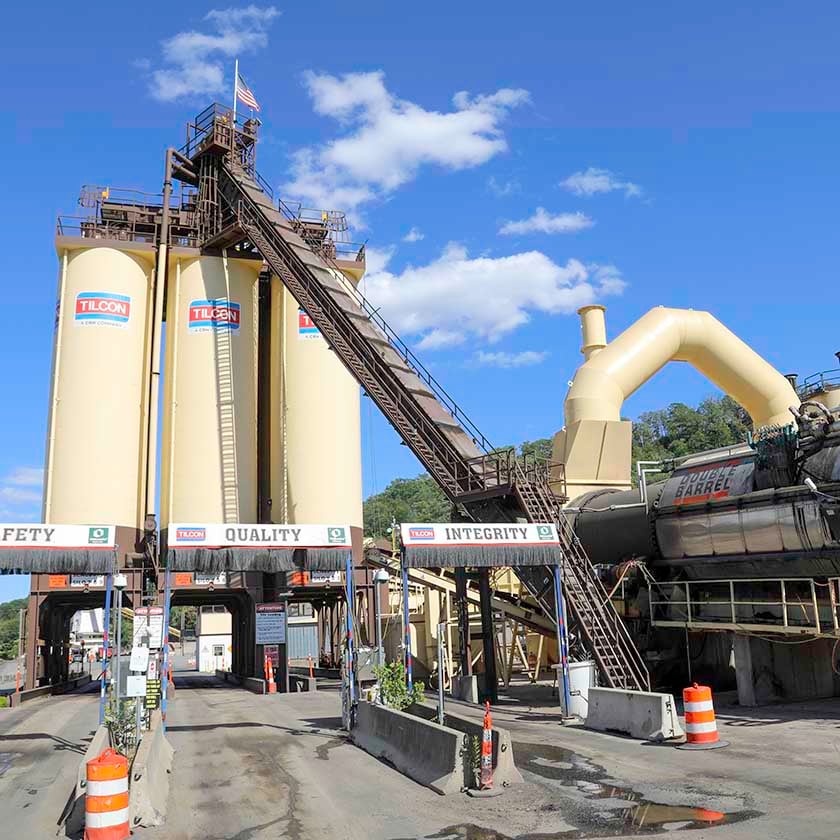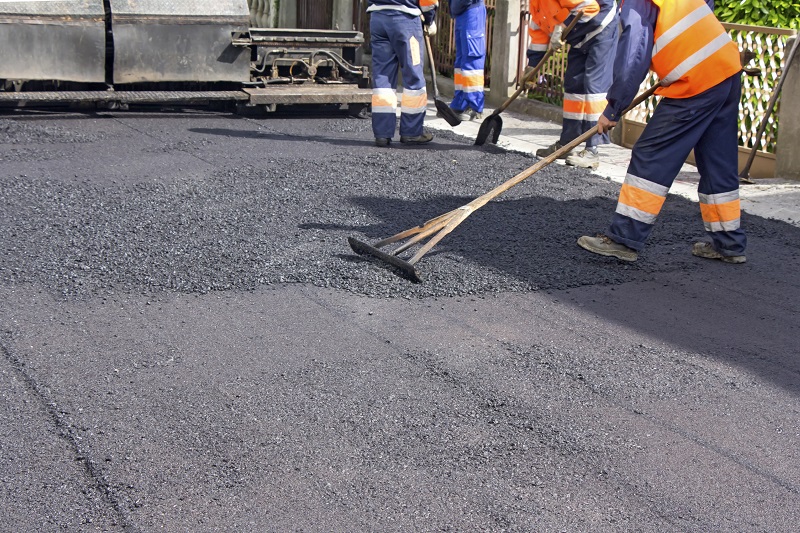Opening the Tricks of Warm Mix Asphalt Modern Technology
Checking out the midsts of hot mix asphalt innovation uncovers a globe where exact formulations and thorough procedures merge to shape our roads and facilities. The fusion of fillers, accumulations, and binders isn't merely a construction job however a strategic orchestration of longevity and effectiveness.
Significance of Warm Mix Asphalt
Hot Mix Asphalt plays a vital role in contemporary infrastructure development due to its sturdiness and cost-effectiveness. As the most frequently utilized paving material for roads, freeways, and car parking whole lots, Hot Mix Asphalt uses a range of advantages that contribute to its value in building projects.
The toughness of Warm Mix Asphalt stems from its structure, which includes aggregates, binder, and filler products that are meticulously chosen and blended to meet particular performance needs. On the whole, the importance of Warm Mix Asphalt in infrastructure growth can not be understated, as it continues to be a keystone of modern-day construction practices.
Elements of Asphalt Mixes
The structure of asphalt blends contains meticulously selected accumulations, binder, and filler materials that are vital for accomplishing certain efficiency requirements. Accumulations are the primary component of asphalt blends, giving stamina and security. These accumulations can be natural, such as crushed rock or crushed rock, or synthetic, like recycled products from old sidewalks. The binder, generally asphalt or asphalt concrete, holds the accumulations with each other and gives adaptability and resilience to the mix. The selection of the binder is vital as it directly influences the mix's efficiency in various weather conditions. Fillers, such as moisturized lime or Rose city cement, are used to improve the mix's workability and aging resistance. Angled Parking.
The mix and percentage of these parts play a significant function in figuring out the high quality and efficiency of the asphalt mix. Engineers thoroughly create the mix to satisfy particular demands, thinking about elements like website traffic quantity, environment problems, and sidewalk lifespan. Appropriate option and harmonizing of accumulations, binder, and fillers are important for creating durable, long-lasting asphalt sidewalks.
Combining and Production Techniques

Once the accumulations are selected, the binder, frequently asphalt cement, is added to bind the materials together. The binder's quality and quantity dramatically influence the mix's toughness, adaptability, and resistance to environmental variables. In addition, fillers like moisturized lime or Portland cement might be included to improve particular qualities of the asphalt mix, such as its workability or moisture resistance.
During manufacturing, the accumulations and binder are heated up, generally between 250-325 ° F(121-163 ° C ), to promote blending and guarantee proper layer of the accumulations. The blending process has to be detailed to accomplish a homogeneous combination that advertises the desired efficiency qualities of the asphalt. Various strategies, such as batch blending or drum blending, are employed to attain constant and high-quality asphalt mixes for building and construction projects.
Variables Impacting Asphalt Performance
Elements affecting asphalt efficiency encompass a variety of variables that influence the resilience, durability, and total top quality of asphalt pavements. One essential aspect is the high quality of products utilized in the asphalt mix.

Ecological conditions likewise affect asphalt performance. Temperature variants, moisture infiltration, and website traffic loads can all influence the structural stability of the sidewalk. Design considerations, such as sidewalk thickness and water drainage, are vital in making certain the long-term efficiency of the asphalt sidewalk. By carefully thinking about these variables, contractors and engineers can enhance asphalt efficiency and improve the life span of sidewalks.
Sustainable Practices in Asphalt Technology

WMA allows for the manufacturing and positioning of asphalt mixes at reduced temperature levels compared to standard hot-mix asphalt, resulting in reduced energy intake and greenhouse gas emissions. The usage of permeable asphalt mixes can assist minimize stormwater runoff problems by permitting water to infiltrate with the sidewalk and right into the ground, promoting natural water filtering and reenergize processes.
Verdict
To conclude, hot mix asphalt innovation plays a critical role in modern infrastructure development due to its sturdiness and cost-effectiveness. By very carefully stabilizing elements, utilizing appropriate blending methods, and thinking about different elements, engineers can create top quality asphalt mixes that withstand rush hour lots and rough climate condition. Embracing sustainable check these guys out methods, such as from this source utilizing recycled products and warm-mix innovations, even more improves the environmental kindness of asphalt innovation.
Mixing and manufacturing strategies in hot mix asphalt technology entail the exact combination and processing of accumulations, binder, and fillers to produce a durable and high-performance asphalt mix.Aspects influencing asphalt efficiency encompass an array of variables that affect the resilience, longevity, and general quality of asphalt sidewalks. Sustainable techniques in asphalt innovation encompass different initiatives intended at decreasing the ecological impact of asphalt manufacturing and paving procedures. By incorporating recovered asphalt pavement (RAP) and recycled asphalt roof shingles (RAS) into brand-new asphalt blends, the market can significantly minimize the consumption of raw products and power, while likewise lowering landfill waste.
WMA permits for the manufacturing and positioning of asphalt mixes at reduced temperature levels compared to standard hot-mix asphalt, resulting in reduced power intake and greenhouse gas emissions.